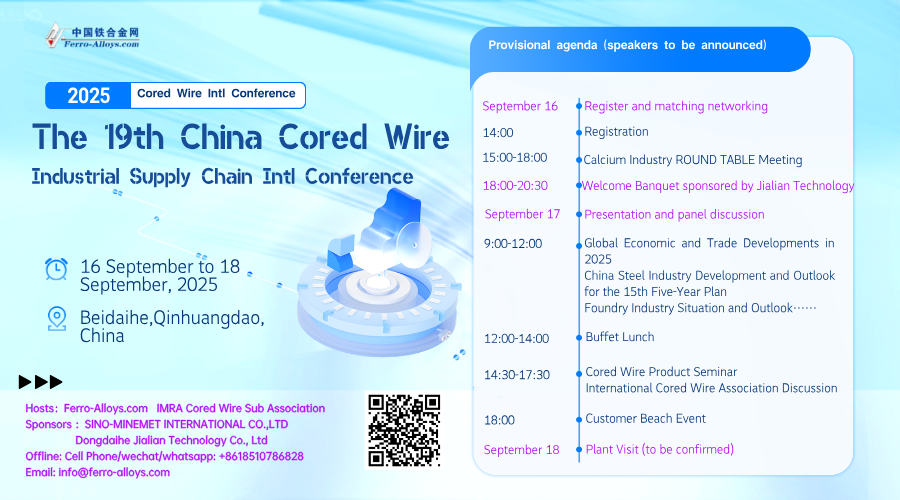[Ferro-Alloys.com] Owing to rapid technological advancement, a global trend has emerged towards making steels stronger, tougher, increasingly wear resistant, and more ductile, and as a result better suited for use in continually evolving industrial and commercial applications. Advancements in the production of higher strength and higher performance steels therefore remains an area of active development for steel companies around the world. However, as we begin to produce higher and higher strength steels, a detrimental phenomenon known as hydrogen embrittlement will become increasingly significant.
Hydrogen embrittlement is a phenomenon that causes the deterioration of the mechanical properties of steel, such as ductility, resulting in the fracturing, cracking or failure of the steel over time. This results from the presence of hydrogen within the microstructure of the steel. Hydrogen can be introduced during steelmaking, during fabrication processes such as welding, and as a result of corrosion reactions, and can permeate solid steel in atomic form. Hydrogen embrittlement is more likely to occur in higher strength steels, so as steelmakers produce higher strength steels to meet customer demands, hydrogen embrittlement is likely to become a more significant problem.
According to Vanitec, the not-for-profit international global member organisation whose objective it is to promote the use of vanadium-bearing materials, research has been undertaken over several years to better understand how the effects of hydrogen embrittlement can be reduced or controlled. Research undertaken to date suggests that the addition of a small amount of vanadium into high strength steels can have beneficial effects in reducing hydrogen embrittlement in a number of situations.
Vanadium – typically used as a microalloying agent to refine the grain structure of steel, and in turn increase the strength, toughness, and wear resistance of steel – has also been shown to improve the resistance of steel to hydrogen embrittlement. When vanadium is added, it forms microscopic-sized precipitates such as vanadium-rich carbides and nitrides within the microstructure of the steel, which then serve as an effective trapping site for the hydrogen that is present in the different locations within the microstructure of the steel.
When the hydrogen is trapped, although still present in the steel, it considerably reduces the negative impact of the hydrogen and improves the resistance to hydrogen embrittlement. It is only when the hydrogen is free to diffuse through the steel without being trapped that the hydrogen embrittlement phenomenon starts to occur.
Another potential trapping site for hydrogen is within the grain boundaries, which are the disordered regions within the microstructure of steel, which attract and trap the hydrogen atoms. When the addition of vanadium reduces the grain size in steel, it in turn increases the hydrogen trapping potential of the steel and improves the resistance to hydrogen embrittlement.
While the hydrogen content in steel can be controlled at the production stage, hydrogen can also be introduced at later stages through welding, surface or heat treatments and corrosion. In these instances, it is advantageous to introduce trapping sites through vanadium additions to reduce the risk of hydrogen embrittlement.
Research to date has found that the addition of vanadium is able to reduce hydrogen embrittlement in aluminized ultra-high strength press hardening steels with tensile strengths between 1,800 and 2,000 MPa1 and that microalloying high manganese austenitic twinning-induced plasticity (TWIP) cold strips with vanadium and nitrogen provide increased resistance to delayed cracking2.
Moreover, Vanitec is sponsoring research on how vanadium can be used to reduce the risk of hydrogen embrittlement in spot welds in high strength steels for automotive applications.
Vanitec technical consultant David Crowther says that as steel companies continue to actively develop advanced high strength steels (AHSS), it is important to continue to explore opportunities to incorporate vanadium into these types of steels.
Further research is recommended to investigate opportunities to demonstrate the benefits of vanadium additions in AHSS for automotive applications, and in long steel products such as forging steels. Crowther says that the continued active development of these steels should also enable more opportunities for vanadium demand.
- [Editor:tianyawei]



 Save
Save Print
Print Daily News
Daily News Research
Research Magazine
Magazine Company Database
Company Database Customized Database
Customized Database Conferences
Conferences Advertisement
Advertisement Trade
Trade













 Online inquiry
Online inquiry Contact
Contact

Tell Us What You Think